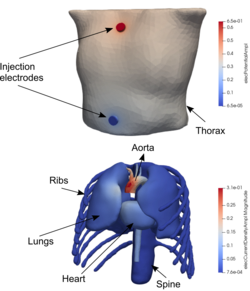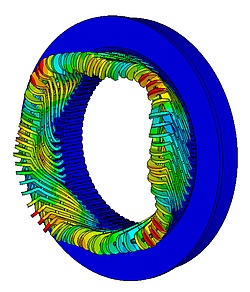Multiphysical Modelling, Simulation and Optimization
In general, the quantities that describe physical effects in technical systems are a function of time and space, and the description leads to a system of coupled partial differential equations (e.g. electromagnetics-mechanics-acoustics). As a rule, these cannot be solved analytically and require the use of numerical methods such as the finite element method. For this purpose, the IGTE uses and further develops the open source finite element software openCFS, which includes non-conformal finite elements, finite elements of higher order, complex material models including hysteresis, methods for shape and topology optimisation as well as inverse methods for determining material parameters.


In the initial phase of the design process, it makes sense to use stochastic optimisation methods such as evolutionary strategies in order to investigate as many feasible designs as possible. Once the most promising design has been found, deterministic optimisation strategies such as gradient-based methods are used to finally optimise the properties of the technical/medical process or device.
